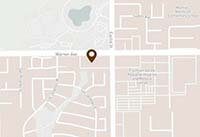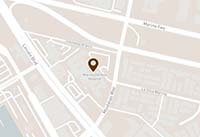Weight Loss Follow-up Los Angeles
The First Few Days – Water, Liquids, and Walking
Immediately after the procedure…take occasional sips of water, or suck on popsicle or ice chips
The day after your procedure…Drink slightly more water than the day before (but again, only a few sips at a time). Avoid sugary or carbonated beverages.
The next few days…
- Continue drinking small amounts of water to avoid dehydration. Dehydration can be manifested with feelings of weakness, faintness, dizziness, and dark colored urine.
- Add clear, thin, broth-type liquids
- Drink low calorie liquids such as 1% milk, decaffeinated herbal tea, or decaffeinated coffee
- Avoid protein shakes as they may be too thick to pass through the band at this stage
NOTE: Progress slowly, and find what works for your body. Everybody is different.
Things to consider:
- If you’re unable to keep any fluids down, drink less fluid
- Contact your doctor if frequent or persistent regurgitation occurs.
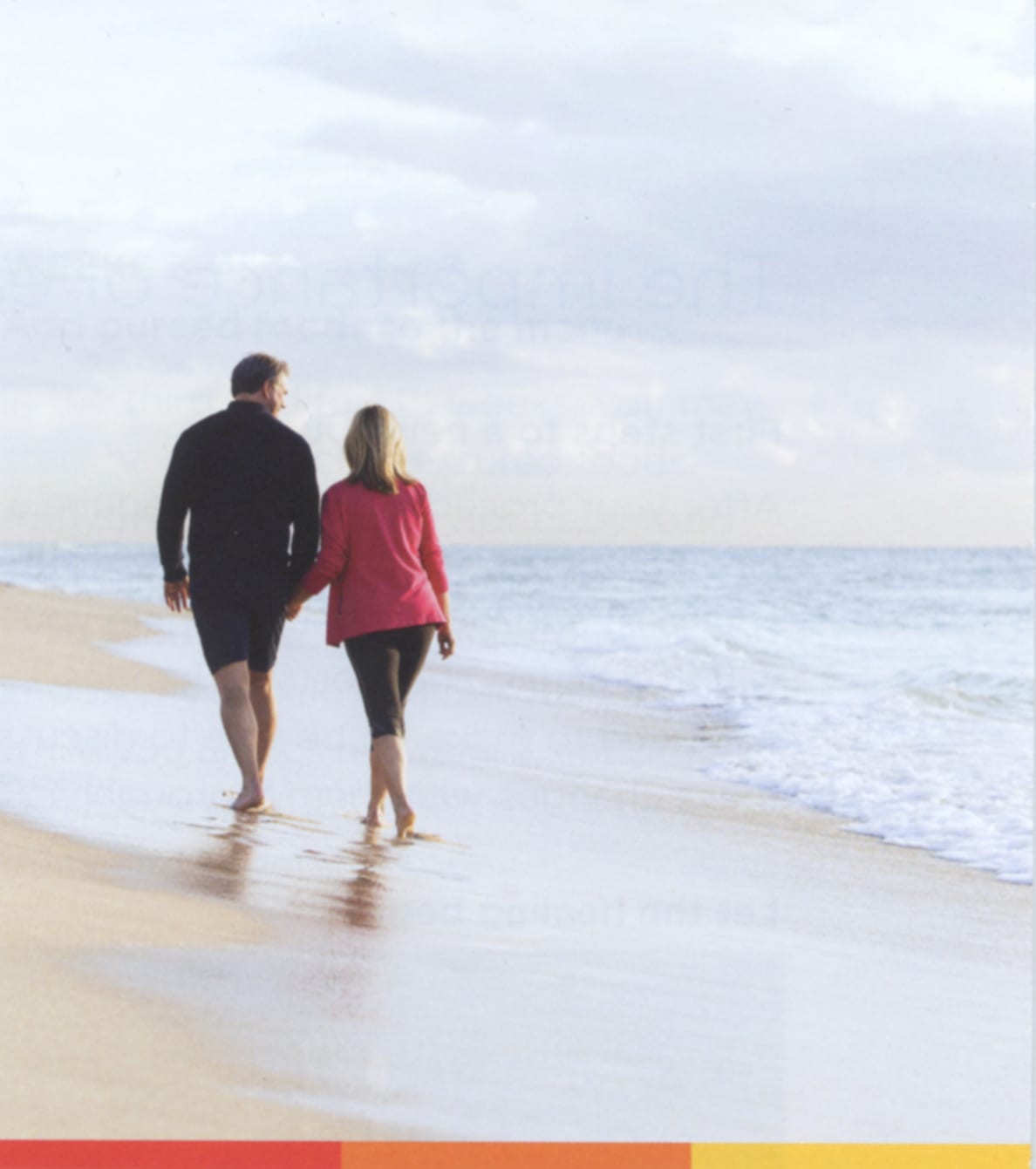 Walk it off! In the first few days after your operation, you’ll want to walk around as much as is comfortable for you to gain back your strength and prevent blood clots. Give yourself about two or three weeks to recover before doing more extensive physical exercise – and then take it slow. After four to six weeks you may be ready to resume your normal activities and a new exercise program, but consult your doctor first to ensure that your activities are appropriate to your recovery.
Walk it off! In the first few days after your operation, you’ll want to walk around as much as is comfortable for you to gain back your strength and prevent blood clots. Give yourself about two or three weeks to recover before doing more extensive physical exercise – and then take it slow. After four to six weeks you may be ready to resume your normal activities and a new exercise program, but consult your doctor first to ensure that your activities are appropriate to your recovery.
THIS INFORMATION IS MEANT TO BE A GUIDE. DR. DAVTYAN MAY GIVE YOU SLIGHTLY DIFFERENT RECOMMENDATIONS BASED ON HIS EXPERIENCE.
Post-Operation Dieting: Eating and Drinking for a Proper Recovery
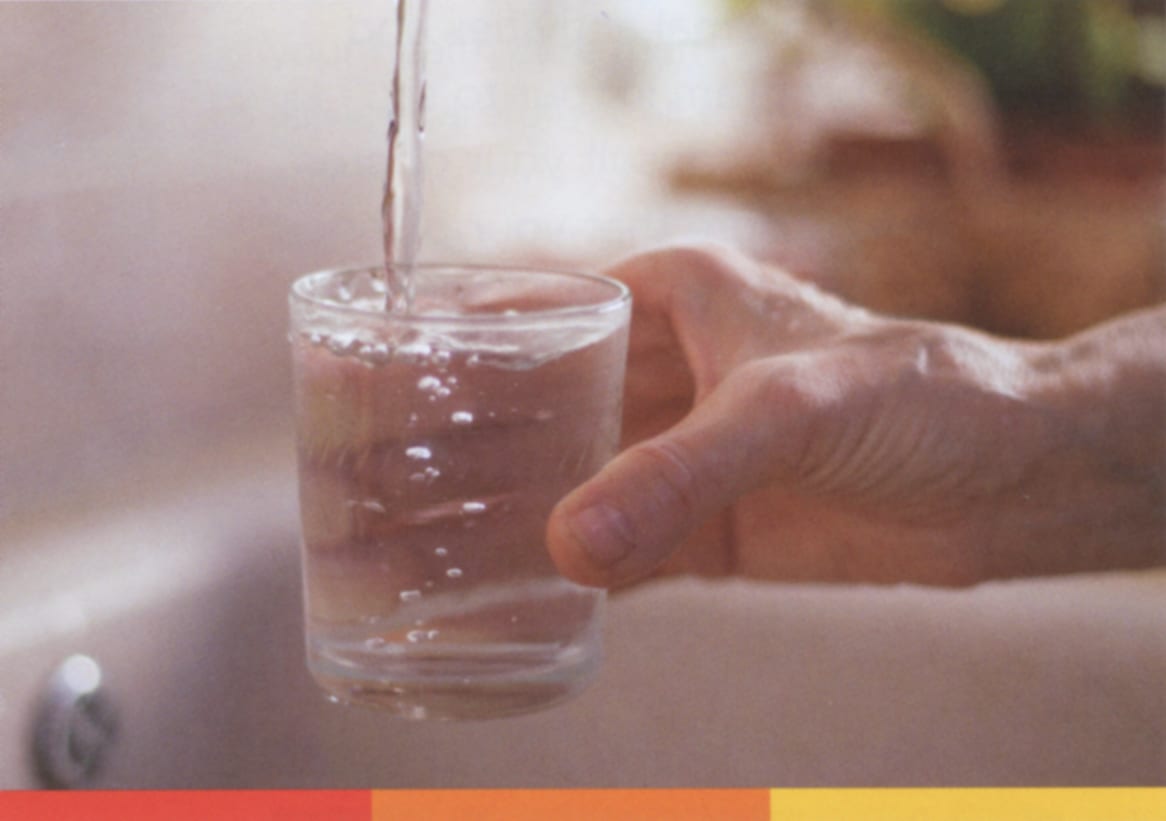 First Steps to a New Body:
First Steps to a New Body:
After the operation, you will need a new, temporary diet to optimize recovery. Your weight loss surgeon can help you plan your eating and lifestyle changes, so be sure to have a thorough discussion with them about the changes you need to make
Baby Steps:
This new diet allows your newly shaped stomach to heal completely and keeps the Lap-Band System in the right position. Healing may take a month or more. While you’re healing, you’ll want to prevent stretching the small stomach pouch above the Lap-Band System. Regurgitation can stretch the pouch – and can increase the chance of stomach tissue slipping up through the Lap-Band system. Try to visualize the size of your pouch (about the size of a golf ball) and avoid food volumes that may stretch it or cause vomiting.
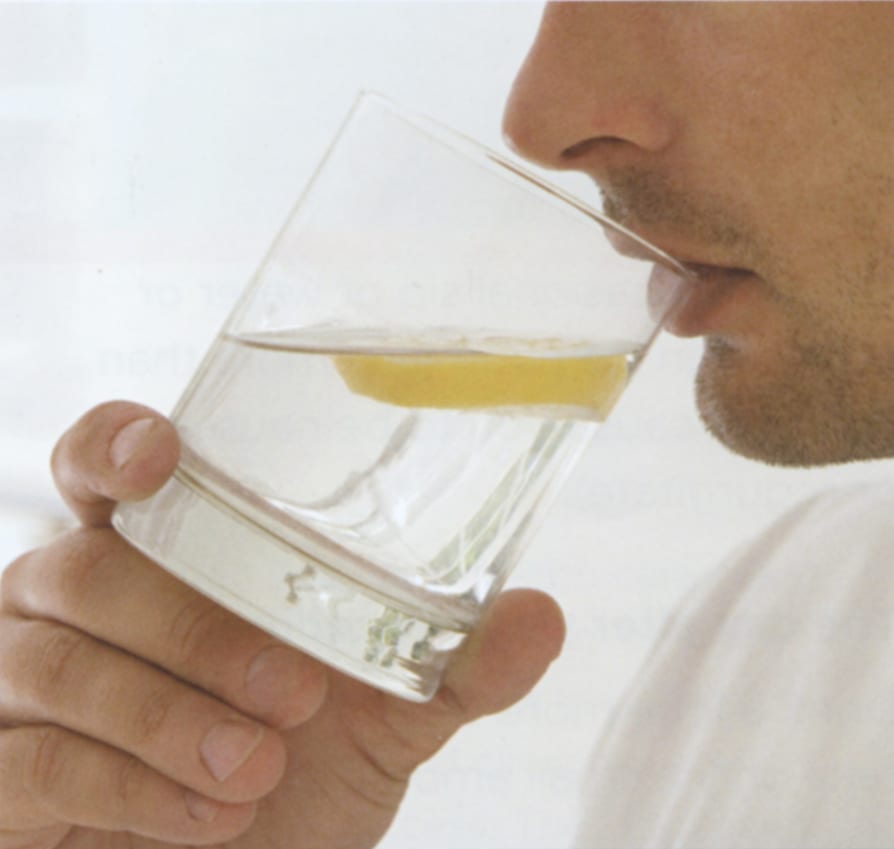 Discomfort while eating – what’s normal and what’s cause for concern: Almost all Lap-Band System patients will encounter foods that don’t go down easily. This generally occurs when you’ve been eating too much, too fast or chewing too little, or drinking too much liquid, or have been drinking liquid too quickly. As you adapt to the Lap-Band system, regurgitation should stop or become much less frequent. Listen to your body, and steer clear of foods that cause more discomfort. However, more persistent or unexpected regurgitation should be reported to your doctor in order to gauge the need for an adjustment or rule out possible complications.
Discomfort while eating – what’s normal and what’s cause for concern: Almost all Lap-Band System patients will encounter foods that don’t go down easily. This generally occurs when you’ve been eating too much, too fast or chewing too little, or drinking too much liquid, or have been drinking liquid too quickly. As you adapt to the Lap-Band system, regurgitation should stop or become much less frequent. Listen to your body, and steer clear of foods that cause more discomfort. However, more persistent or unexpected regurgitation should be reported to your doctor in order to gauge the need for an adjustment or rule out possible complications.
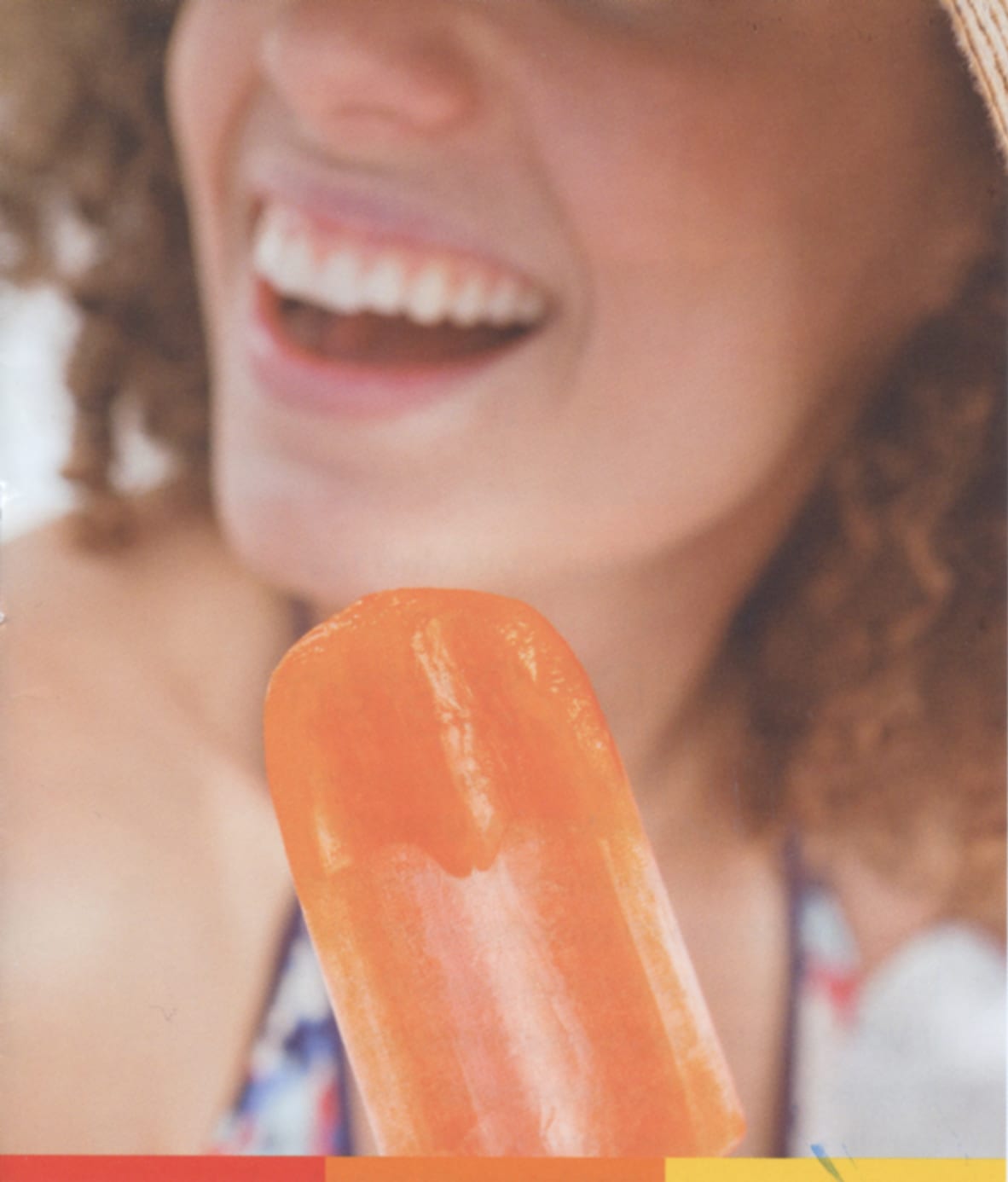 Weeks 1-2: Stick to a liquid diet. The main goal in the early days after your Lap-Band procedure is to avoid vomiting and to protect the small stomach pouch. Be sure to stay hydrated with enough water, and see if you can add thin liquids, such as:
Weeks 1-2: Stick to a liquid diet. The main goal in the early days after your Lap-Band procedure is to avoid vomiting and to protect the small stomach pouch. Be sure to stay hydrated with enough water, and see if you can add thin liquids, such as:
- Clear broth soup (with no vegetables, meat, or cream)
- No-sugar-added ice pops
Always check with your bariatric surgeon as he will have his preferences!
Weeks 3-4:
Add soft, low-calorie, pureed foods to the menu.
At this point, you may start consuming slightly textured foods, such as yogurt or cottage cheese. Aim for the consistency of baby food. This stage will help to transition to more solid foods later. Prioritize protein-rich foods to help maintain muscle mass while you lose weight, and then move on to fruits and vegetables.
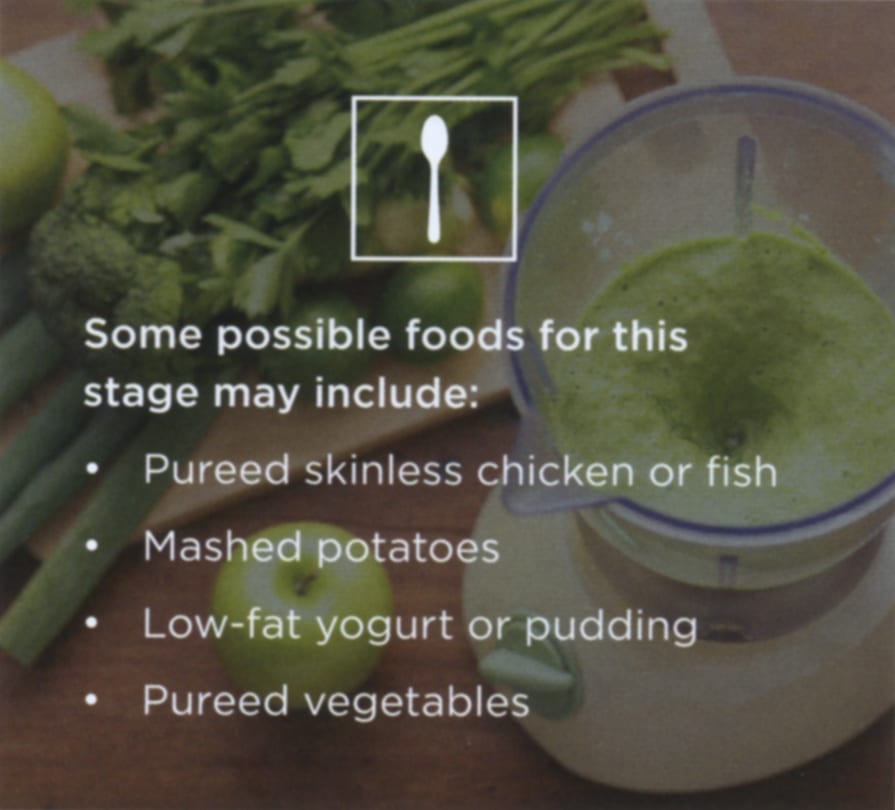 Week 5: Enjoy soft foods, but chew well. Your meals can now include tender, cooked foods such as fish and ground turkey. Make a habit of chewing your food as thoroughly as possible. If you don’t follow these precautions, you may experience nausea, stomach irritation, and swelling – or even an obstruction at the opening of the stomach. Keep in mind that advancing to heavier foods may cause vomiting – which can increase the chances of band or stomach slippage, or stretching of the small stomach pouch above the band.
Week 5: Enjoy soft foods, but chew well. Your meals can now include tender, cooked foods such as fish and ground turkey. Make a habit of chewing your food as thoroughly as possible. If you don’t follow these precautions, you may experience nausea, stomach irritation, and swelling – or even an obstruction at the opening of the stomach. Keep in mind that advancing to heavier foods may cause vomiting – which can increase the chances of band or stomach slippage, or stretching of the small stomach pouch above the band.
IF YOU HAVE ANY PROBLEMS WITH SOFT FOODS, STOP EATING THEM AND GO BACK TO THE LIQUID DIET YOU HAD EARLIER. REMEMBER TO ASK YOUR SPECIALIST ORR DIETITIAN FOR ADVICE SPECIFIC TO YOUR SITUATION.
10 Steps to Success with the Lap-Band System
1. Eat only when you’re hungry – about three small meals daily.
The Lap-Band system creates a small stomach pouch that has a capacity of about one-quarter cup (approximately 2 ounces) of food. If you try to eat more than this at a time, you may become nauseous or vomit. If you routinely eat more than this, the small stomach pouch may stretch, which will cancel the effect of the operation. Frequent vomiting may cause certain complications, such as stomach slippage. Learn how much your stomach pouch can hold comfortably, and do not exceed this amount.
2. Eat slowly and chew thoroughly
Food can only pass through the new stoma (stomach opening) if it has been chewed into very small pieces. You will need to take more time for your meals, and chew your food very well.
3. Stop eating as soon as you feel full.
Remember to eat your protein first; this will ensure that you’re getting the proper nutrients. Once your new stomach pouch is full, your brain receives a signal that you have eaten enough. However, it takes time for you to be aware of this signal, so space out your bites. Rushing through your meal may cause you to eat more than you can hold, which can lead to nausea and vomiting. Take time to eat and enjoy your meal. The goal is to feel satiated, not stuffed. Try to recognize the feeling of fullness, and know when to put the fork down.
4. Do not drink while eating
The LAP-BAND System only works with solid food. If you drink liquid during a meal, it softens and liquefies the food you’ve eaten, and the LAP-BAND System becomes less effective. Refrain from drinking during a meal as much as possible.
5. Do not eat between meals
After finishing a meal, refrain from eating any snacks until the next meal. Snacking between meals is a major obstacle to weight loss, and it’s very important that you break this habit. Patients with proper “fill” levels shouldn’t feel hungry in between meals. If you do, this may be a sign that the LAP-BAND System is too loose, and you should tell your Lap-Band Surgeon.
6. Eat only high-quality food
You meals should include high amounts of protein and vitamins. Refrain from filling the space in your small stomach pouch with “junk” food that is low in vitamins and other nutrients. Avoid fatty and sugary foods. Opt instead for fresh vegetables, fruit (but not fruit juice), meat, and whole grain cereals. Consult your bariatric surgeon or dietitian before you take any vitamin supplements.
 7. Avoid high-fiber food
7. Avoid high-fiber food
Foods that are high in fiber, such as asparagus, can obstruct the stoma. They cannot be chewed well enough to break them up into small enough pieces and your saliva can’t break it down, so these foods should be avoided. If you would like to eat fibrous foods once in a while, be sure to cook them well, cut them into very small pieces and chew them thoroughly. See page 9 for more information about foods to watch out for.
8. Drink enough fluids during the day
You should be drinking at least 6 to 8 glasses of water a day. As you lose fat, your body will need to eliminate waste products. You will need to make a habit of drinking large amounts of liquid daily in order to urinate enough to excrete these waste products from your body. Remember to limit your drinks to water, tea, skim milk, or coffee (without milk, cream, or sugar), and remember not to drink during or immediately after meals.
9. Drink only low-calorie drinks
Drinks simply run through the narrow opening created by the band, so by consuming high calorie liquids such as sodas or fruit juices, you may not lose weight, even if you otherwise follow your diet.
10. Be active
This is one of the most important rules. Physical activity burns calories and is key to successful weight loss. Remember that you don’t have to be intimidated by strenuous exercise regimens; lots of physical activities can be rewarding and fun! See page 10 for some examples based on your doctor’s recommendation for activity level.
Again, these are general recommendations and are not meant to substitute the preferences of your weight loss surgeon.
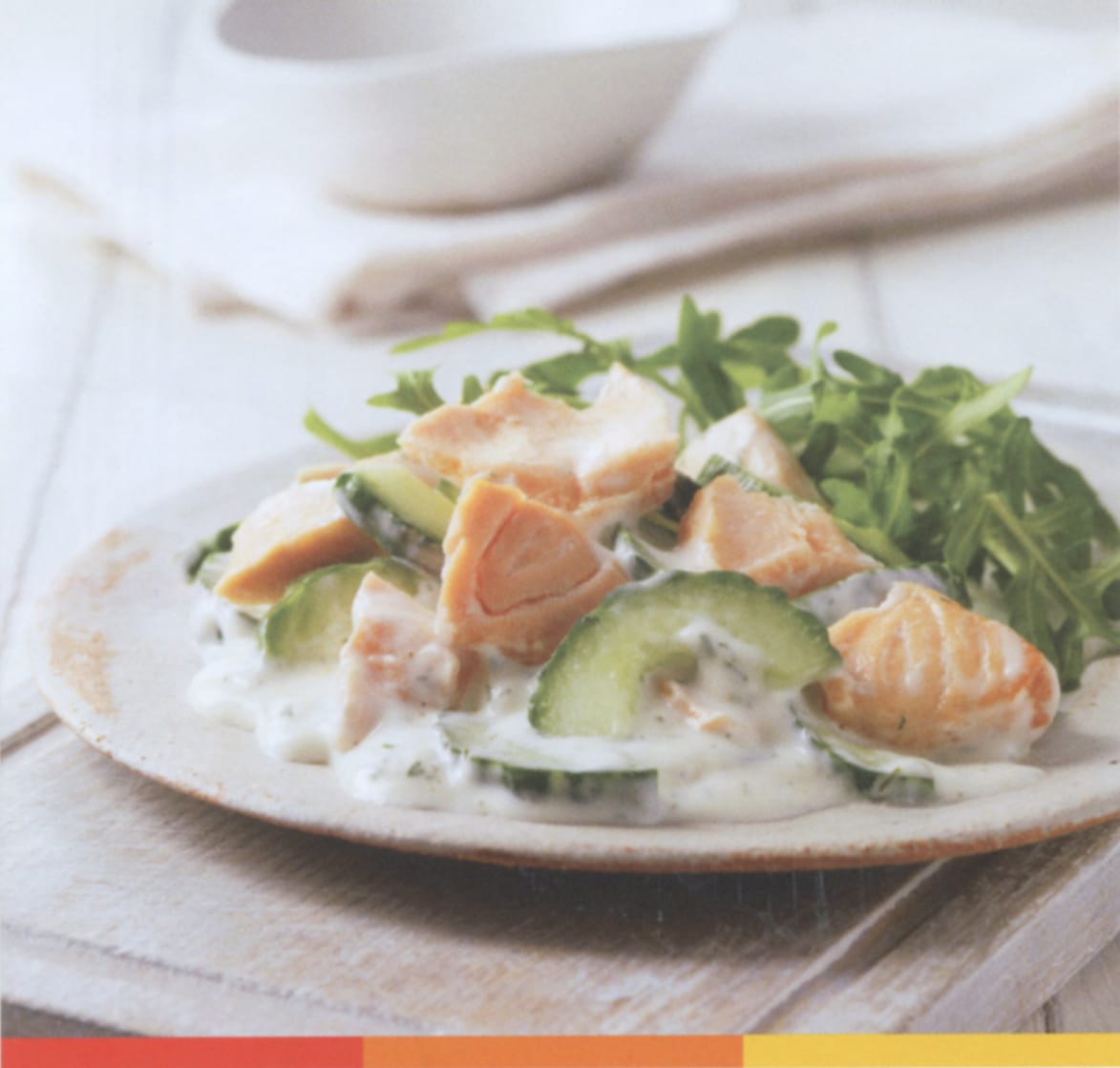 Food: Choosing the right things to eat
Food: Choosing the right things to eat
Meat, fish, poultry, eggs. 1 to 2 oz. of meat, fish, or poultry, or one egg, to supplement your protein intake. A food scale can be extremely useful to form good habits and learn proper portion sizing. Remove all visible fat from the meat. Remove the skin from poultry. Cook the meat in ways that require very little fat: choose to grill, steam, microwave, or boil your food rather than fry it. Remember that this should be the first portion of your meal, so make it count!
Whole grains. 1 small portion of cornflakes for breakfast, or 1 to 2 slices of whole wheat or rye bread, preferably toasted, every day. (If you find that bread blocks your pouch opening, eat other forms of whole grains.)
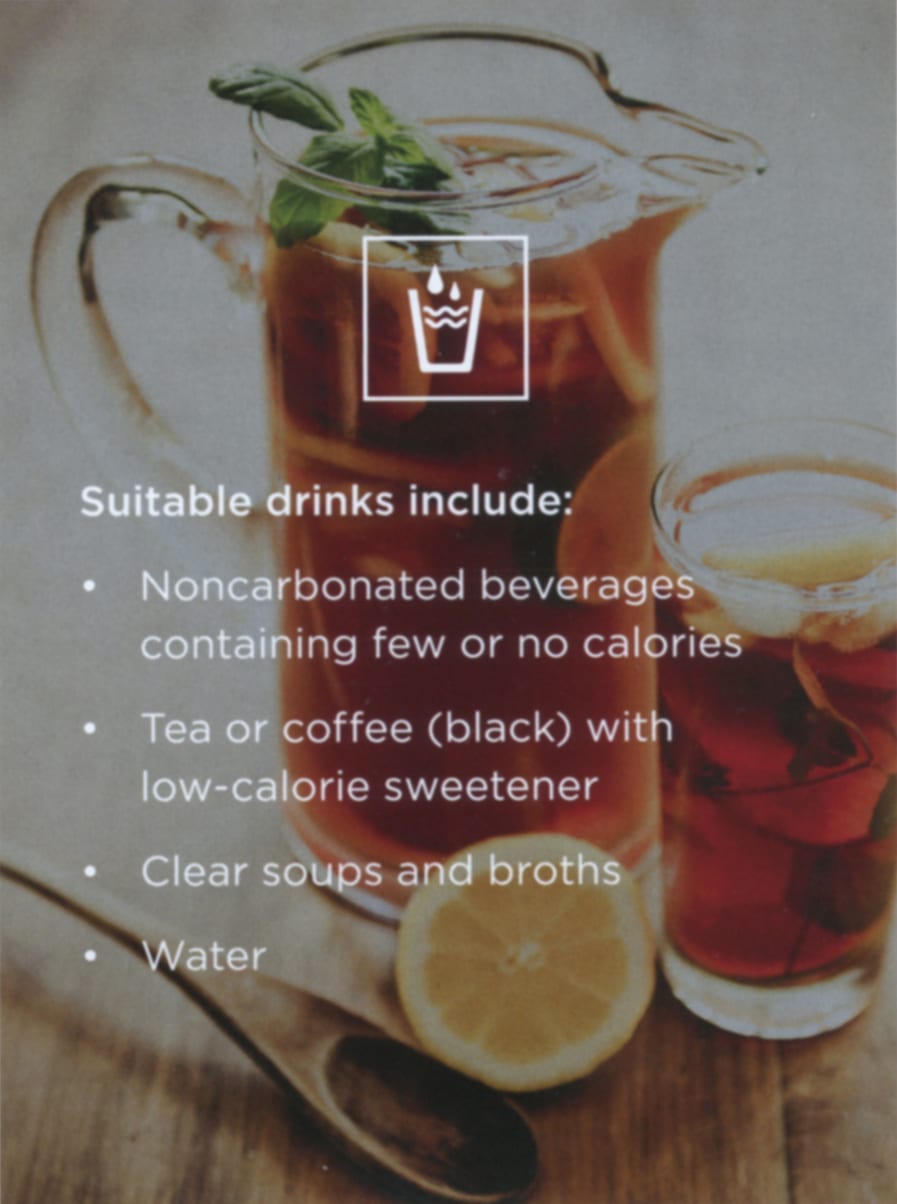 Dairy products. Milk and yogurt are liquid calories. You should stick to low-fat forms of dairy. These foods are high in calcium, which makes them an important part of a healthy diet. Eat a maximum of 2 cups of low-fat milk or low-fat yogurt, or 1 oz. of low-fat cheese a day.
Dairy products. Milk and yogurt are liquid calories. You should stick to low-fat forms of dairy. These foods are high in calcium, which makes them an important part of a healthy diet. Eat a maximum of 2 cups of low-fat milk or low-fat yogurt, or 1 oz. of low-fat cheese a day.
Fats. You should only be consuming 3 to 4 teaspoons of margarine, butter, or oil per day. Low-fat salad dressings and mayonnaise should be used in moderation.
Drinks. Have as many liquids per day as you wish, but make sure they’re calorie-free.
Foods to watch out for:
Eat with caution. Certain foods may cause problems for some people. They may have difficulty passing through the opening of the stomach and may cause blockage. You should introduce these foods to your diet slowly, one by one, to make sure that your body will tolerate them. Always be careful, chew well, and follow your specialist’s or dietitian’s advice.
- Dry meat
- Peanut butter
- Shrimp
- Untoasted or doughy bread
- Pasta or rice
- Fibrous vegetables like corn, celery, and asparagus
- Dried fruit
- Coconut
- Popcorn
- Membrane of citrus fruits
- Nuts
- Seeds and skins of fruits and vegetables
- Greasy or fried food
Avoid. Some foods are saturated in calories, but contain very little nutritional value. Avoid high-sugar and fatty foods such as:
- High-calorie soft drinks
- Syrups
- Cakes
- Biscuits
- Jam
- Honey
- Cookies
- Pies
- Chips
- Pastries
Getting active – and staying active
Physical activity is an important component of any weight loss plan, augmenting the effects of the LAP-BAND System and a healthy diet. Staying active contributes to your weight loss, will increase your overall fitness, and will allow you to maintain your ideal weight. The table below lists suggested activities corresponding to the activity level your doctor recommends.
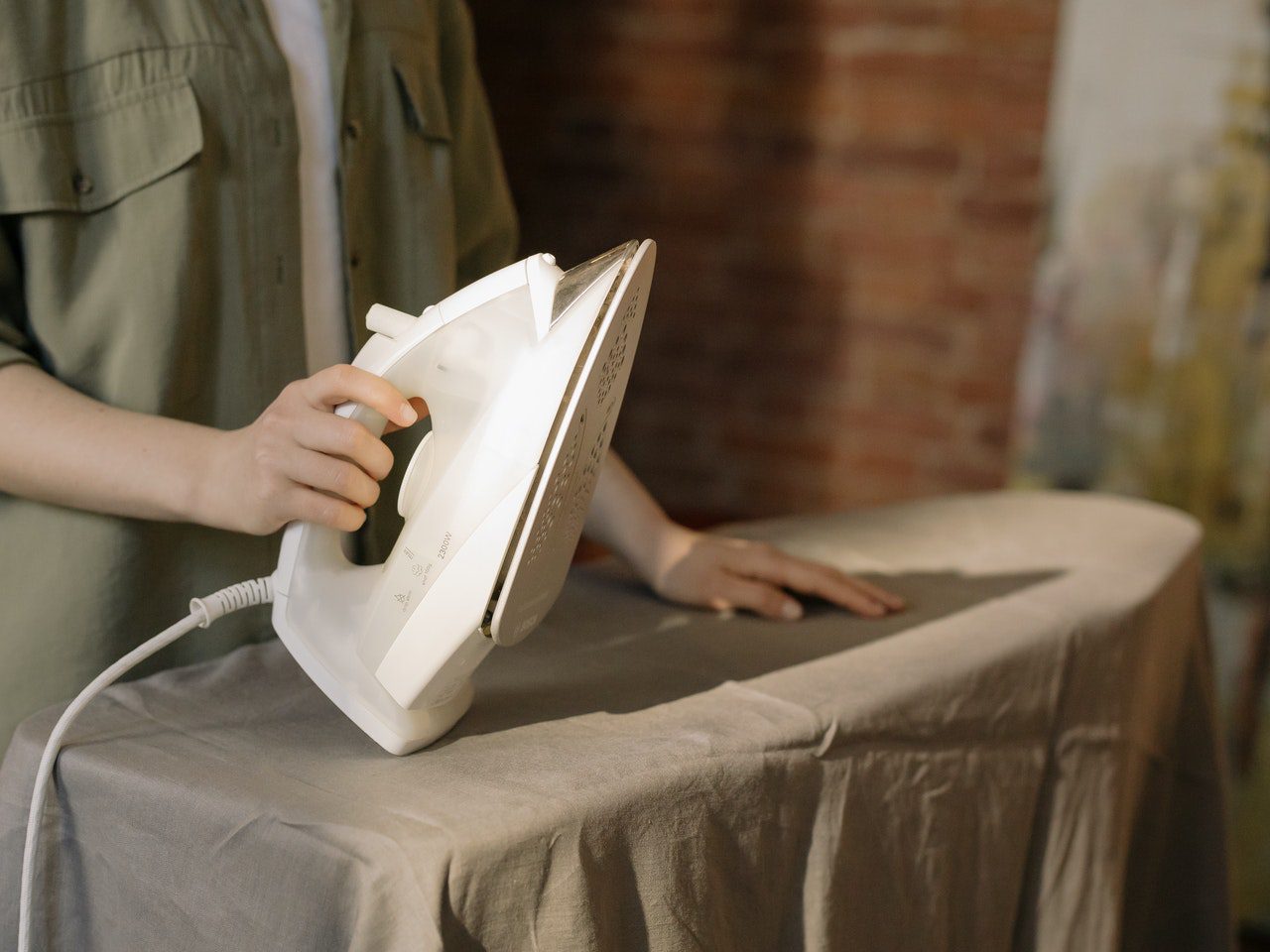
Very light
- Activities which require you to stand
- Simple chores (walking to the mailbox, ironing, cooking, etc.)
- Playing a musical instrument
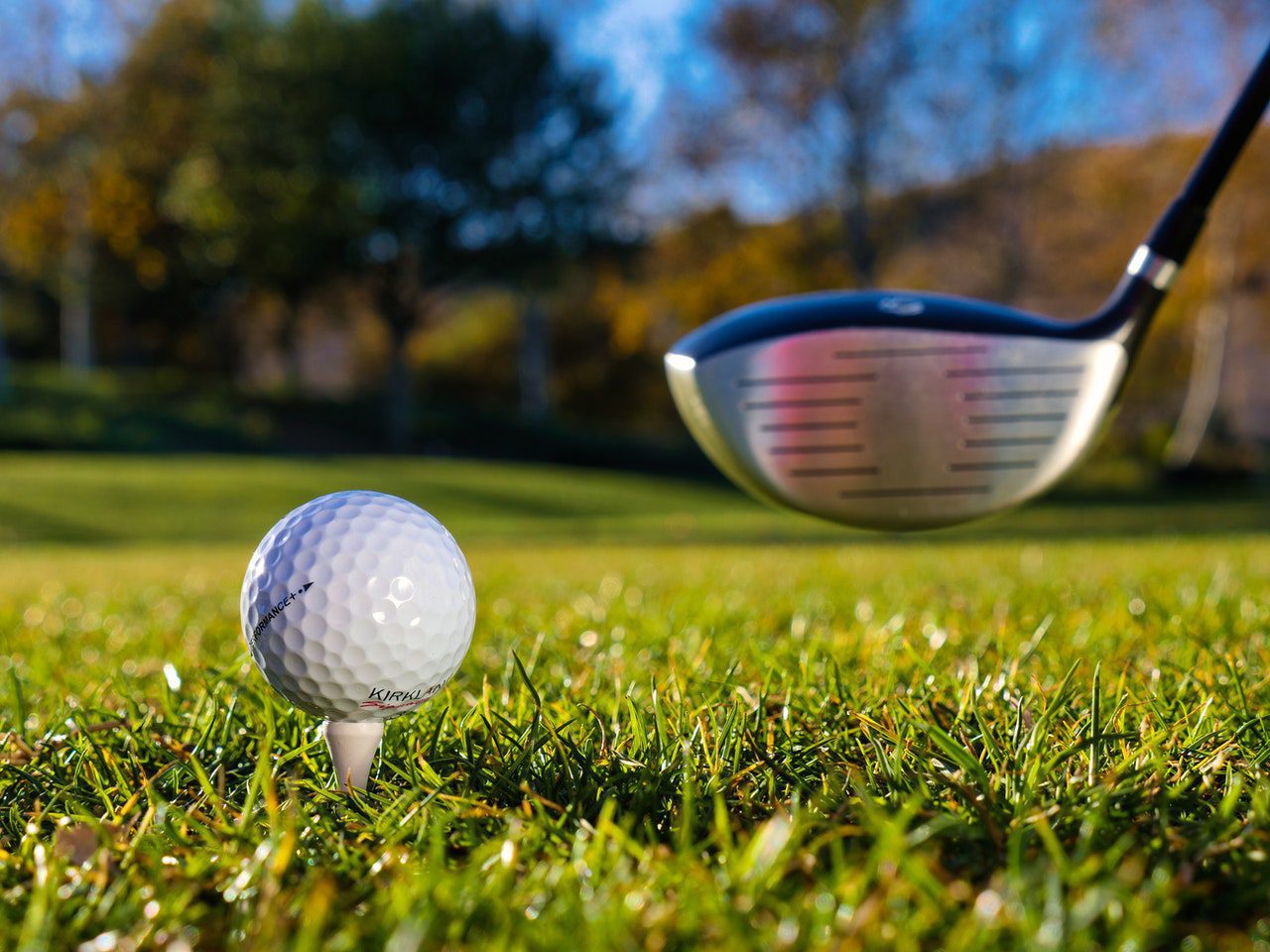
Light
- Walking (leisurely, 24 min/mile)
- Carpentry
- Light housecleaning
- Child care
- Golf
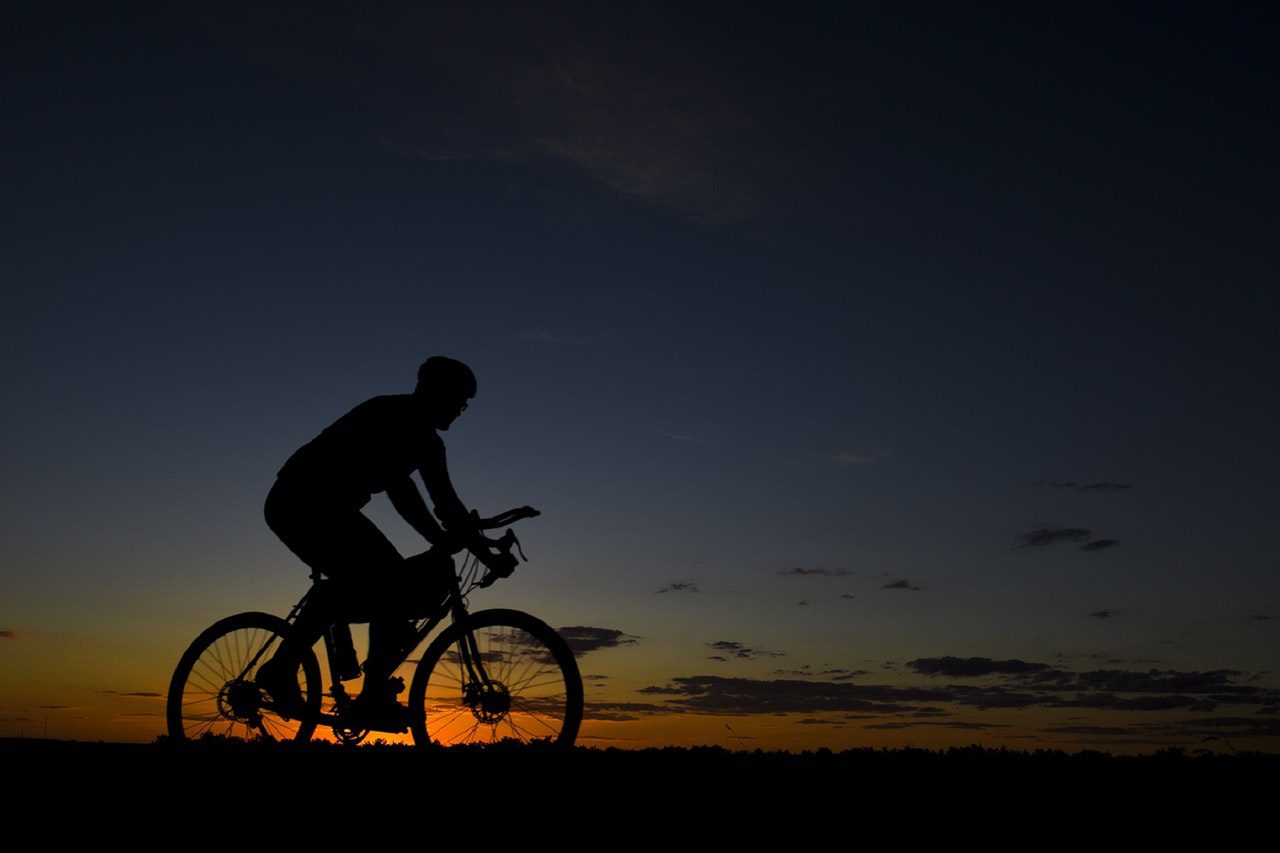
Moderate
- Walking (brisk, 15 min/mile)
- Gardening (weeding, planting, etc.)
- Cycling
- Tennis
- Dancing
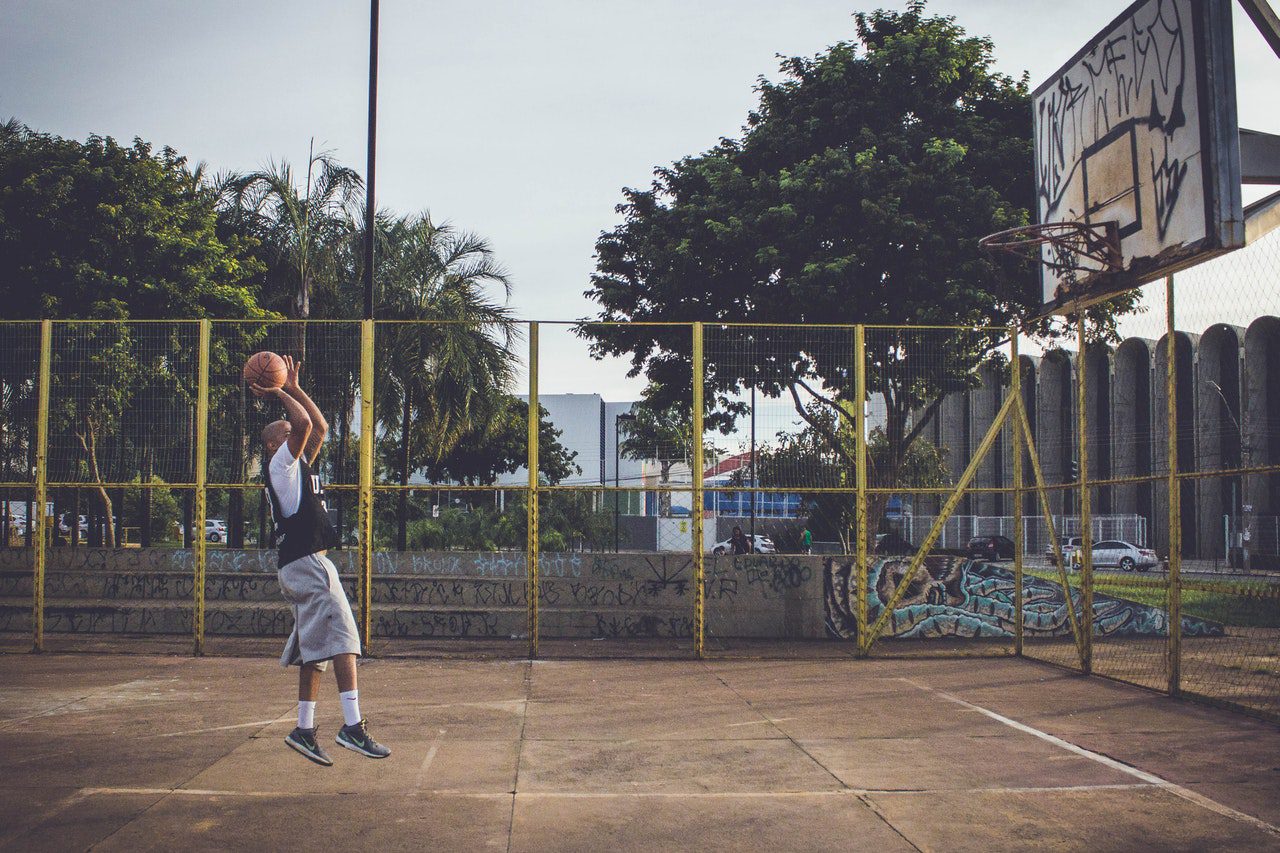
High
- Walking
- Jogging
- Basketball
- Climbing
- Soccer
After the operation – Follow up visits
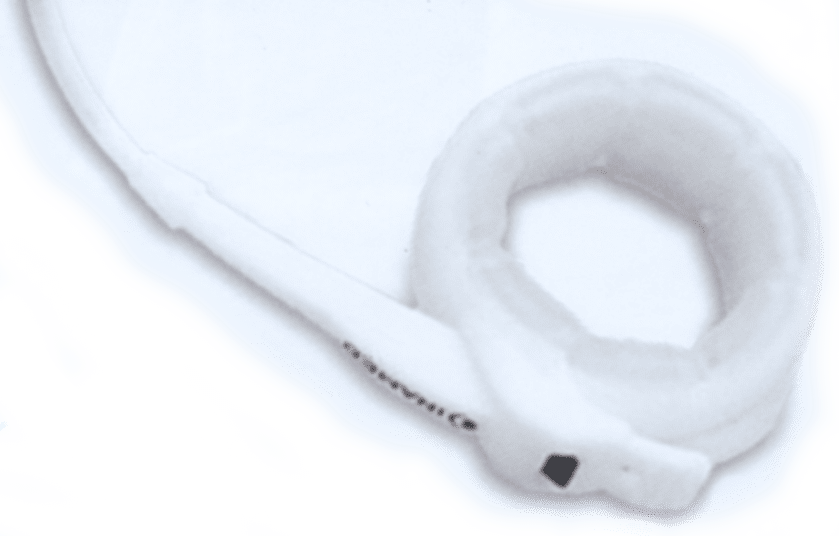 Foods to watch out for:
Foods to watch out for:
During the first year after your operation, you should meet with your surgeon (or someone in their practice) every four to six weeks for a follow-up visit. These may vary depending on your Lap-Band Surgeon’s preferences. In my practice, I see my patients once a week for six weeks for post operation follow-ups, and then monthly follow-ups thereafter. Your surgeon will keep track of your progress, and he or she will decide whether or not you need a band adjustment. Remember that, since everybody’s experience with the LAP-BAND System is different, not all follow-up visits will involve adjustments. As a matter of fact, we believe that patients who see their bariatric surgeon more frequently will have better outcomes than those who don’t, regardless if those visits include adjustments or not. During your visit with your weight loss surgeon, you will have an opportunity to learn more about the proper foods, eating habits, and exercise routines necessary to achieve better results. Your bariatric surgeon will learn what kind of difficulties you are having, and thus keep these difficulties from evolving into complications. Based on your complaints or concerns, your Lap-Band surgeon may choose to order an x-ray with a contrast (Upper GI), or a gastroscopy (EGD) to better evaluate the area of your esophagus and stomach where the Lap-Band is placed.
This graphic illustrates how you can tell when you are in need of an adjustment. When your band has the right amount of fluid, it’s called being in the “Green zone”. Ideally, the tightness of the band should be such that it allows you to gradually lose weight.
- Hungry between meals
- Eating large portions
- Not losing weights
You may need
MORE fluid.

You may not have
enough fluid.
- Not hungry between meals
- Good weight loss
- Portion control
- Patient satisfaction
You’re in the
Green Zone!

Right amount
of fluid in band
- Poor food choices
- Regurgitation
- Discomfort while eating
- Poor weight loss
- Night cough
You may need
LESS fluid.

You may have
too much fluid.
- The procedure involves inserting a fine needle into the access port under the skin of your abdomen (you may experience a pricking sensation similar to when you give blood)
- Adjustments can be made either in the hospital or in a doctor’s office.
- Your weight loss surgeon may use a type of x-ray technique called fluoroscopy to assist in locating the access port, to guide the needle into the port, and to view the insertion of the needle.
- Fluoroscopy may also be used after the LAP-BAND System has been adjusted to evaluate your pouch size and stomach size.




